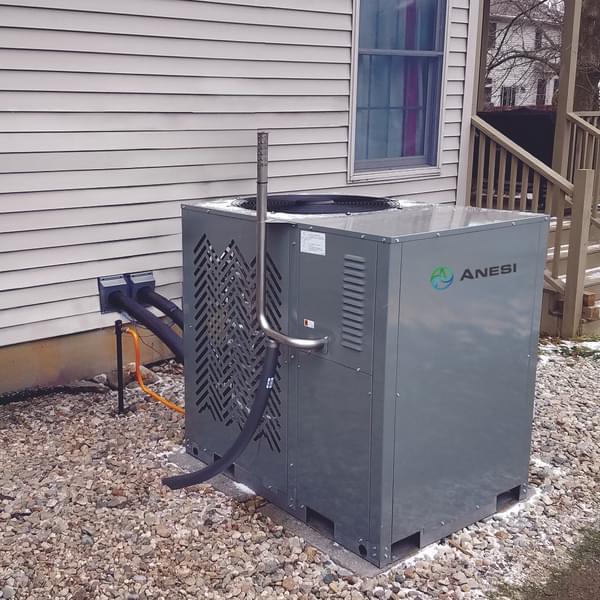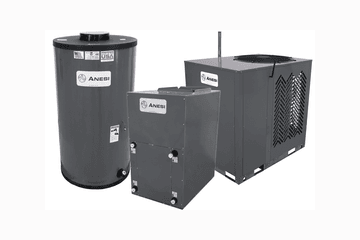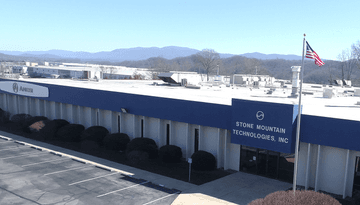Gas Heat Pump Technology: Your Questions Answered, Part 1
- Written by Nicole Karpavich
- October 15, 2024

Gas heat pumps are gaining attention as a sustainable alternative in the heating industry. I recently had the opportunity to explore the world of gas heat pumps with Scott Reed, VP Sales & Marketing at SMTI. Our conversation covered a wide range of topics, from the technology’s efficiency and environmental impact to its market potential. Join us on this journey as we uncover the details of gas heat pumps and their role in the future of energy solutions.
NK: What are gas heat pumps and how do they differ from other heat pump technologies?
SR: All heat pumps work by moving heat in the "wrong direction" – from warmer to colder – using a refrigerant that must be compressed and pushed through phase changes. Gas heat pumps (GHPs) use thermal energy, or heat, to drive the refrigeration process, unlike electric heat pumps (EHPs), which rely on mechanical compression to move heat.
The gas absorption cycle has been around since the mid-1800s, when the first patent was filed by Ferdinand Carré. He initially developed it to make ice because food preservation was extremely important back then. Absorption chillers were what made those big chunks of ice that you might have seen in old pictures of horses pulling around in carts through the streets. The vapor compression cycle (used by EHPs) came later in the early 1900s. Carrier was the first to do the vapor compression cycle with any commercial success. But the gas absorption cycle as a cooling cycle was a leading process for the next 100 years after it was patented, and it competed with vapor compression for cooling well into the latter half of the 20th century. However, the relatively low Coefficient of Performance (COP) for cooling with gas absorption limits its use in most modern applications.1 In contrast, space and water heating GHPs have become a modern success story, offering a much higher COP compared to traditional gas-fired heating appliances.
NK: We’ve discussed benefits of GHPs, like their efficiency, but want to ask about how they function in cold climates?
SR: The Anesi GHP is rated to function without any backup or supplemental heat source, even in extreme temperatures as low as minus 40 degrees Fahrenheit/Celsius. When properly sized, it will keep your house warm, even in those conditions. If you compare the energy efficiency curves of a GHP to the “cold climate” EHPs available today, you’ll see that GHPs perform significantly better as the temperature drops. This translates to the lowest cost of delivered heat to the end-user.
NK: What products does SMTI offer?
SR: Our initial product now on the market is an 80,000 BTU/hour gas absorption heat pump with an AFUE rating of 140%. One key target market is heating single family homes in the U.S. and Canada. This heat pump excels in cold-weather heating, and is available in a “combi” package, meaning it can replace both your furnace and your water heater.

The Anesi Heat Pump System for single-family homes has three main components in a forced-air heating situation: the heat pump, which is installed outside the house, a custom air-handling unit that directly replaces the old furnace, and an optional 80-gallon storage tank that replaces the old gas water heater. The system offers the same comfort that furnace customers are used to and does not require any upgrades to the home, which can sometimes be a challenge with electric heat pumps in fuel-switching situations. If the home is hydronically heated, then the air-handler is not needed since the heat pump’s output is warm water.
Another great application is commercial water heating, such as in hospitality, food service or other high DHW usage situations. The hot water loads of these establishments can be served by GHPs, and our heat pump has the added benefit that it can be retrofitted into an existing facility. The economics here are generally very strong because the heat pump runs all day, saving 30-50% of the restaurant’s hot water heating bill; the longer it runs, the more it saves.
All the refrigerant, combustion, and venting components remain outside. The custom air-handler resembles a furnace, but there's no combustion inside. It takes the warm water from the outdoor heat pump and converts it into warm air that flows through your duct system. Additionally, the same system provides the domestic hot water used in the house.
The initial product capacity is 80,000 BTU/hour, but we can manufacture units ranging from 10,000 BTUs to 140,000 BTUs. The advantage of our design is its flexibility, allowing us to customize capacity anywhere within that range.
People sometimes wonder about having an AFUE rating above 100%. Remember, it’s a heat pump; it draws heat from the environment and combines it with combustion heat. This means that, assuming traditional natural gas as the input, about a third of resulting heat input is renewable energy. Technically, that’s solar energy, as the sun heats the atmosphere.
We are just beginning to explore the potential of our technology – there are a variety of other applications that we are targeting, and you will see Anesi heat pump products entering the market to serve them in the coming years.
NK: The combi component is different from other heat pump technologies for sure. As you’ve described, they are focused on space and water heating. What about on the cooling side?
SR: The bottom line is that when you consider these the two thermodynamic cycles, vapor compression and gas absorption, they have complementary strengths and weaknesses. While both can technically be harnessed for heating and/or cooling, vapor compression is generally better for cooling in most situations by today’s standards. But on the flip side, gas absorption excels in heating, particularly in cool and cold climates. There is a lot of history behind how each technology evolved, but going forward, we must focus on the modern context —how or why people require heating and cooling, the costs involved, and the environmental impact.
There are some limited scenarios where the cooling side of gas absorption can be used economically. For example, in a restaurant that requires continuous heating for domestic hot water, the cooling side can be leveraged to provide supplemental “free” cooling for that same space.
We are also developing a combined heating and cooling heat pump featuring both vapor compression and gas absorption. It will be a true dual-fuel and two-cycle system in one box, capable of managing all heating, cooling, and domestic hot water needs for the home. It’s truly the best of both worlds, with each cycle optimized for its strengths.
NK: I know these products are currently in the works. Where are you in the manufacturing process?

SR: We're currently making and shipping gas heat pumps from our 160,000 square-foot facility in Johnson City, Tennessee. Although the space is larger than we need at the moment, it will eventually allow us to produce tens of thousands of units per year. Our production output will be aligned with market demand. Our business model is designed and predicated on volume. Costs are a little higher as we get started, but volume and experience in our sales channels will drive it down.
This is just the beginning of our deep dive into gas heat pumps and their potential impact on the energy landscape. In Part 2, we’ll dive into the challenges gas heat pumps face in market awareness, costs, and decarbonization, and how SMTI is tackling these obstacles. Stay tuned for more insights from Scott Reed as we explore the path forward for gas heat pumps and their role in a cleaner, more efficient future.